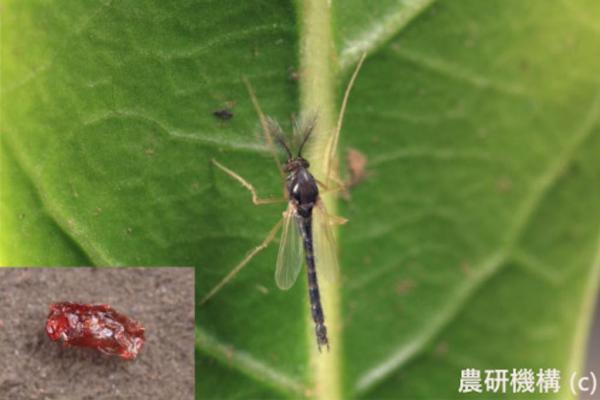“It seems that these extremophilic insects in the process of evolution have coopted a very conservative transcription factor,” researcher Oleg Gusev said.
Scientists have identified the way a mosquito-like insect in Africa comes back to life after drying up.
While still in its larval state, the sleeping chironomid, Polypedilum vanderplanki, can become almost entirely desiccated and come back to life, losing 97 percent of the water in its body before being reanimated.
New genetic analysis carried out by researchers in Japan and Russia suggest the bug avoids death by dehydration by triggering a gene called the “heat shock factor.” The gene is found in all living organisms, and helps species deal with a variety of environmental stresses.
But not all heat shock factor genes are created equal. Under extreme conditions, the sleeping chironomid’s heat shock factor goes into hyperdrive.
In the dessert insect, desiccation triggers the heat shock factor to upregulate, producing more heat shock proteins. The unique proteins work to protect other proteins inside the insect’s cells, ensuring vital cell proteins don’t become deformed.
Researchers compared the genetic activity of the sleeping chironomid and a related but less resilient species. They found dozens of genes related to molecular protection are activated during the earliest stages of desiccation in the sleeping chironomid.
At the transcription sites of the “molecular shield” genes, scientists found a DNA motif, TCTAGAA, in abundance. The motif serves as a binding site for the heat shock factor.
Scientists also found the motif at the transcription site for the genes that produce trehalose, a sugar responsible for protecting cells during desiccation. When scientists blocked the expression of the heat shock factor, they found a reduction of trehalose production.
“It seems that these extremophilic insects in the process of evolution have coopted a very conservative transcription factor and its action for their own needs to survive without water by evolving a special gene structure and ‘adjusting’ their genome sequence for these ‘needs,'” Oleg Gusev, researcher at the RIKEN Innovation Center, said in a news release.
The research, published this week in the journal PNAS, suggests the insect has souped up a common gene to tremendous effect.
“One potential application of this finding will be in preserving cells outside the body in a dry state, if we can active the HSF gene,” Gusev said. “We now have a good understanding of how it works in this insect, so we will want to investigate if this is true for other organisms as well.”












